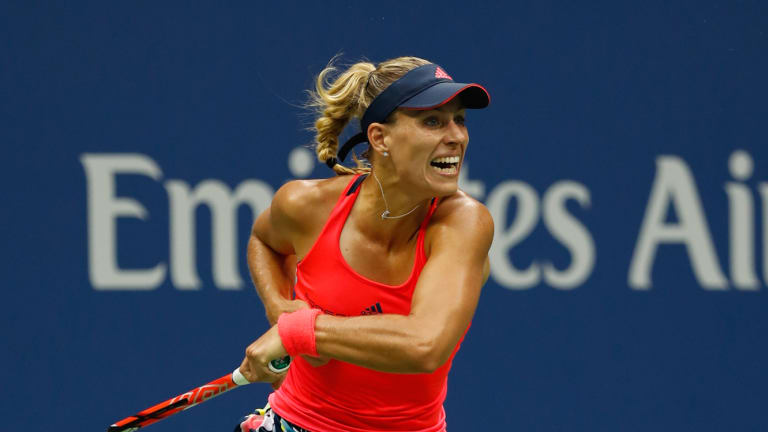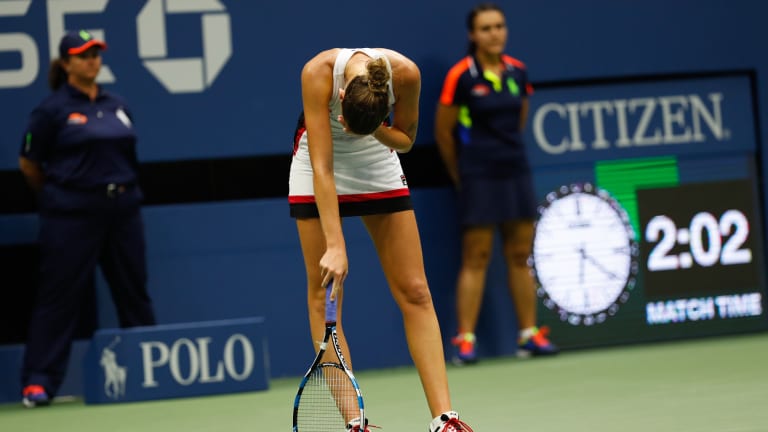NEW YORK—Angelique Kerber was doing what she had sworn to herself she wouldn’t do. She was pushing the ball.
The German was tied at 3-3 in the third set of the U.S. Open women’s final with Karolina Pliskova, and the tension in Arthur Ashe Stadium was as high as the humidity. It was a match that Kerber, as the WTA’s new No. 1 and the woman with a major title on her résumé, was supposed to win. Instead, she had watched as the 11th-ranked Czech had come back, with big shots blazing, from a set down to take it to a third.
Kerber had started the match assertively and won the first set 6-3. Now that early momentum was long gone, and she had spent the early stages of the third set missing routine ground strokes, many of them into the net; these were errors she hadn’t made all tournament. Each time a ball caught the tape and fell back, Kerber shot a glance in the direction of her coach, Torben Beltz, and raised her arms in exasperation.
Were we about to see a repeat of the Olympic final from last month, when a heavily favored Kerber had allowed another unheralded young player, Monica Puig, to outplay her in a third set for the gold medal? Or were we about to see a repeat of her loss to Pliskova in the Cincinnati final, also last month, when Kerber had first tried and failed to become the world’s No. 1 player?
Was Kerber, who has worked hard to curb her pessimism on court, about to go negative again? Was this defensive-minded 28-year-old, who vowed at the start of 2016 to become more aggressive, about to go back into her shell? To lose three straight important finals to players she was favored to beat would have been an inauspicious start to her reign.

